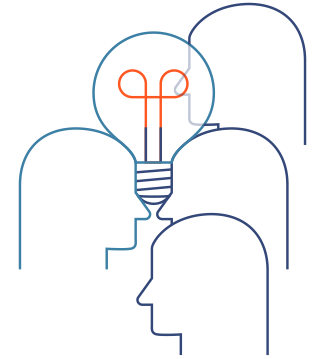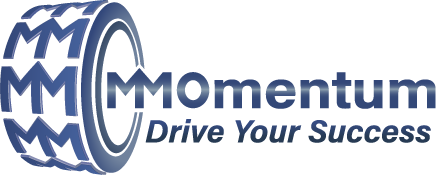Executive Summary:
When a product manager understands how to effectively and collaboratively challenge constraints and redefine assumptions, they can co-create systemic, long-lasting, and impactful results for their organization. Overcoming these roadblocks requires a collaborative approach that first establishes common ground by shifting perspectives from limitations to possibilities and then executing the newfound ideas and strategy. This method fosters trust and respect between marketing and engineering, leading to innovative solutions.
A leadership coach can use a similar approach to help clients navigate mental blocks, rigid constraints, and limiting assumptions. By reframing problems and exploring new solutions, a coach can enhance a client’s performance, build trust, and drive success.
How a Product Manager Can Challenge Constraints and Redefine Assumptions

The Role of Product Marketing
There are often differing perspectives and working style mismatches between product marketing and engineering teams, which are sometimes worsened by mistrust or lack of respect. Product marketing acts as the translator between sales and engineering and is responsible for aggregating, filtering, and translating the sales team’s (also known as the voice of the customer) needs and concerns into actionable requirements for the engineering team to execute. But what happens when the project definition must change or a feature needs tighter specifications?
The Challenge of Rigid Limitations
Engineers, being very analytical, operate within a set of constraints and assumptions that help them focus on exactly what needs to be achieved. But when those constraints and assumptions are overly rigid, it can give rise to unhealthy conflict. I’ve experienced both sides and understand the frustrations. Through my years as an engineering manager and marketing executive, I’ve seen how these limitations can shut down difficult conversations.
Here is a generalized scenario indicative of those I’ve personally experienced:
Product Manager: “We are in trouble. A new competitor has entered the market, and we need to shrink the chip’s die size by at least 10% to hit our margin goals and remain relevant in the marketplace.”
Engineering: “It can’t be done.”
Product Manager: “Can you explain?”
Engineering: “We already minimized every function we could, and attempting further reductions will delay the release to production by 6 months.”
Transforming Conversations Through Collaboration
The next words uttered by the product manager will determine their ultimate value to the organization. They can acquiesce, get mad, or find a way overcome the roadblocks and achieve the desired goal.
When faced with this type of resistance, I would first try a more productive approach by asking, “You’ve done a great job explaining why it can’t be done. Now, let’s figure out how it can be done.” In one simple and thought-provoking directive, the entire tone of the conversation would change. I was able to shift the engineer’s perspective from limitations to possibilities. Their perspective opened, and through meaningful discussions, we re-evaluated the need for specific features, reviewed limiting assumptions, discussed an acceptable new schedule, identified potential risks, and continued working together until the revised product was introduced to the market.
On the occasions that warranted redefining a product, this collaborative approach not only led to a successful outcome but also fostered trust and respect between the engineering and product marketing teams. The engineers saw that marketing was not just randomly demanding changes but also willing to engage in the problem-solving process, enhancing mutual respect.
An excellent article on the types of constraints faced by almost all organizations can be found here: How to Identify and Manage Constraints in Project Management
How a Leadership Coach Can Also Engineer Success
Parallels Between Product Management and Leadership Coaching
Leadership coaching parallels product marketing in many ways. As a product manager must bridge the gap between sales and engineering, a leadership coach must also bridge the gap between the client’s reality and their aspirations or goals.
Overcoming Limiting Assumptions
A significant challenge leaders face is navigating their own and their team’s constraints and assumptions that can stifle innovation and progress. Just as engineers might cling to limitations that seem insurmountable, leaders often encounter mental blocks within themselves and their teams. The coach’s role is to help them see beyond these limitations, challenge assumptions, and explore new possibilities.
Consider a scenario where a leader is facing declining team morale and a reduce ability to meet deadlines due to an overwhelming project load. The leader might think, “We can’t reduce the workload; our deadlines are non-negotiable.” This perspective can create a deadlock (and burnout), much like the engineering team’s initial reaction in the product marketing scenario above.
Reframing Problems and Exploring Solutions
As a leadership coach, I would first acknowledge the validity of the leader’s concerns, much like acknowledging the engineer’s explanation. Then, I would help the leader reframe the problem based on different perspectives. I might ask, “What could you change to make the workload manageable?” or “How can you free up more resources to work on this project?” These questions shift the focus from why something can’t be done to how it might be possible. The inherent value of these questions is not in the specific relevance of the question but in unlocking new paths of inquiry for the client.
Through insightful inquiry and respectful guidance, we could explore delegating tasks, optimizing processes, or even negotiating deadline extensions. Regardless of the path ultimately chosen by the client, challenging their constraints and assumptions while fostering a collaborative problem-solving environment will often lead to insights and solutions they may never have considered otherwise.
Building Trust and Respect Through Coaching
The success of this approach lies within the balance of constructive empathy and collaborative challenge. A good coach doesn’t simply agree with the client’s perspective but pushes them to explore new ways of thinking and acting. By consistently engaging in this collaborative process, a coach earns the trust and respect of their client. This is also how leaders grow and can inspire their teams to achieve more than they thought possible.
When the client sees that their coach is genuinely invested in their success and willing to walk alongside them through the challenges, they can adopt those same ideas into their leadership style. Building this type of trust is foundational for long-term coaching relationships and critical for a client’s leadership development.
Conclusion: The Power of Collaborative Problem-Solving
Whether in product marketing or leadership development, challenging constraints, redefining assumptions, and fostering a collaborative problem-solving environment are key to success. By focusing on possibilities rather than constraints, anyone can unlock new levels of performance and innovation. As an added benefit, this collaborative spirit builds lasting trust and respect, thus leading to impactful results and shared success, which are essential elements of a high-performing organization.
As a leadership coach, seasoned marketing professional, and successful engineer, I’ve seen firsthand the transformative power of this approach, which, as it has in my previous roles, remains at the heart of my coaching practice and other activities.
